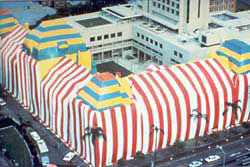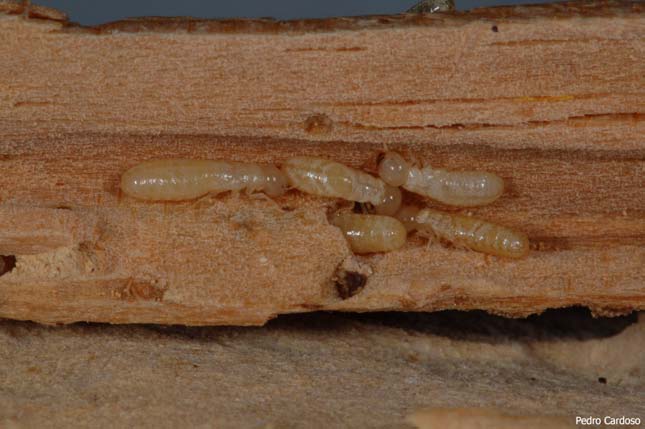PESTS AND DISEASES OF FORESTRY IN NEW ZEALAND
West Indian drywood termite found in New Zealand
Scion is the leading provider of forest-related knowledge in New Zealand
Formerly known as the Forest Research Institute, Scion has been a leader in research relating to forest health for over 50 years. The Rotorua-based Crown Research Institute continues to provide science that will protect all forests from damage caused by insect pests, pathogens and weeds. The information presented below arises from these research activities.
From Forest Health News No. 219, September/October 2011.

In January this year the occupiers of a house in Waikanae noted flying termites emerging from wooden items that they had brought into New Zealand after living in South America for some time. They called in a pest control firm who recognised that the termites were not native and informed the Ministry of Agriculture and Forestry (MAF).
The termites were identified as Cryptoteremes brevis, the West Indian drywood termite. This species, which is considered internationally to be the most destructive drywood termite, is native to South and Central America. It has spread to most non-Asian tropical and sub-tropical areas including the Caribbean, Australia (Queensland) some Pacific Islands, Africa and North America. It has caused considerable economic damage to timber in service wherever it has become established. This is the first time it has been found in New Zealand although it has been intercepted at ports on numerous occasions.
MAF removed the wooden items containing the termites and fumigated them. After surveying neighbouring properties for the presence of the termite (none were found) MAF arranged for the fumigation of the house in early October. The fumigant used was sufuryl fluoride. This gas is used routinely for the fumigation of drywood termites in North America and Australia. Contrary to some press reports it is not the first time it has been used in New Zealand. It was used on occasion to fumigate termites and other wood-boring insects intercepted at ports in the late 1970s and early 1980s.

Queensland has a long history of fumigating buildings for Cryptotermes brevis – it was first reported there in 1964. Since 1976 the Queensland Government has fumigated over 600 buildings at an average annual cost of $500,000. In 1979 Parliament House in Brisbane was fumigated for C. brevis and at the time it was the largest building ever fumigated in the Southern Hemisphere. It may still hold this record.
In California, Florida and Hawaii control of C. brevis costs in excess of $100 million each year.
MAF plans to carry out regular checks on the Waikanae property for the next 10 years. This will include checks on some neighbouring properties and using insect traps during the summer to monitor flying adults. For further information see http://www.biosecurity.govt.nz/pests/ west-indian-drywood-termite
John Bain
This information is intended for general interest only. It is not intended to be a substitute for specific specialist advice on any matter and should not be relied on for that purpose. Scion will not be liable for any direct, indirect, incidental, special, consequential or exemplary damages, loss of profits, or any other intangible losses that result from using the information provided on this site.
(Scion is the trading name of the New Zealand Forest Research Institute Limited.)



